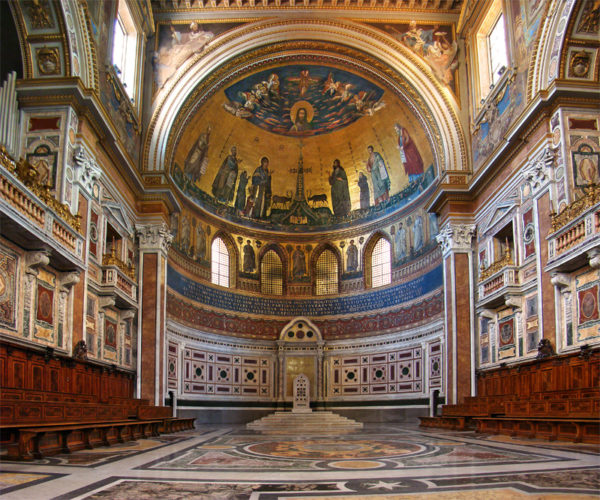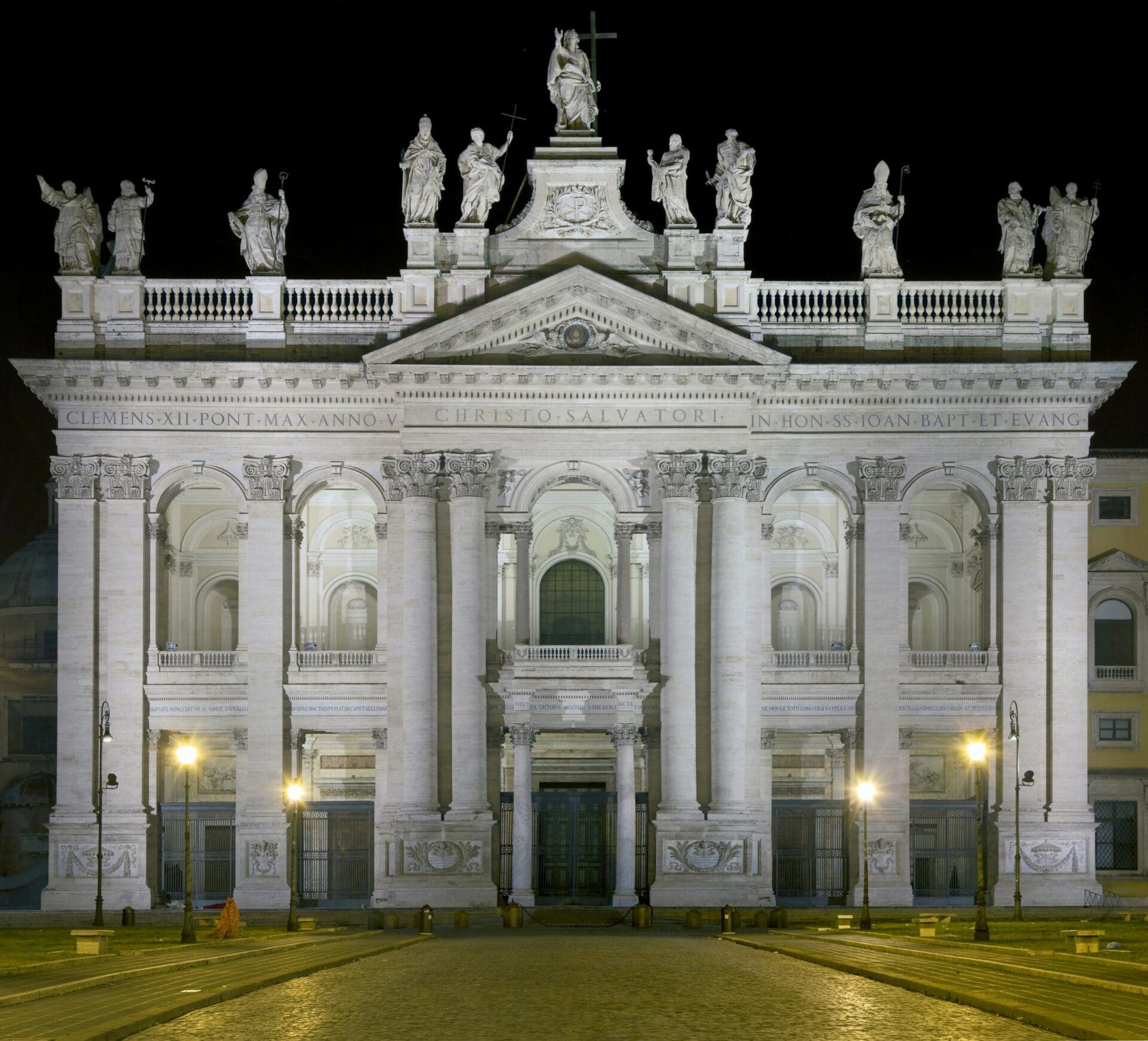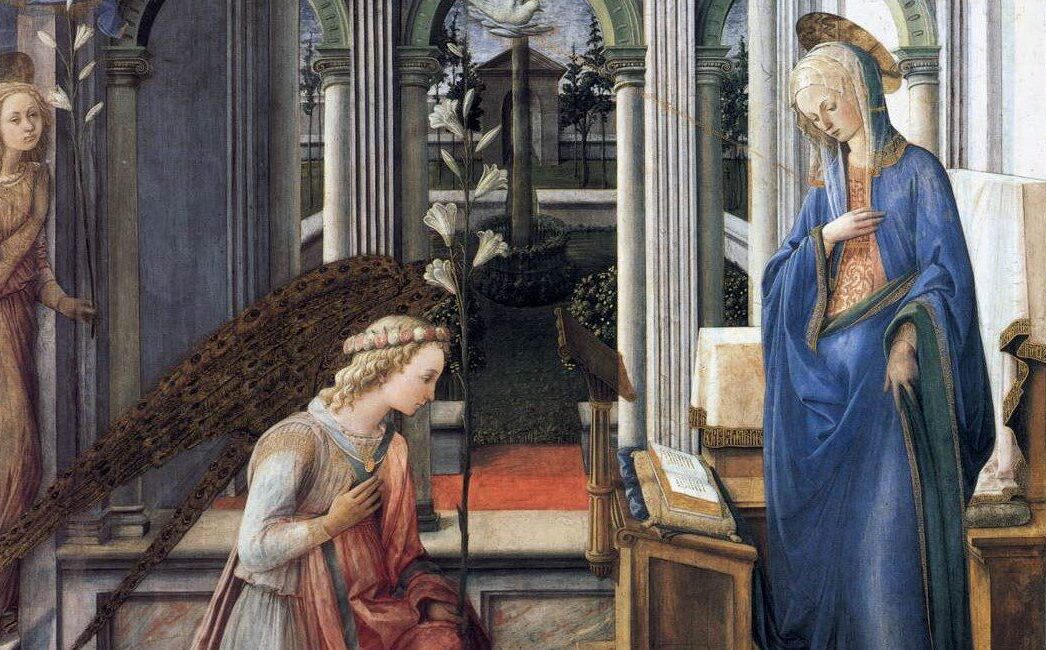Over the doorways of the facade of the basilica of St. John Lateran, the inscription reads: “Mother and head of all the churches of the city and of the world.”
This great distinction and honor owes to the history of the Lateran as the cathedral of Rome and as the location of the papal palace and seat of the Church’s government for many years before the papacy moved to the Vatican.
Between the 12th and 16th centuries, five ecumenical councils were held in this basilica and adjoining palace. The popes resided here from the time Constantine had this basilica built until 1304, when they moved to Avignon.
It is an amazingly resilient basilica: ransacked and destroyed by Vandals, then damaged in 896 by an earthquake and destroyed twice by fires in 1308 and 1360, it was rebuilt and fully restored to its grandeur.
The name “Lateran” comes from the Laterani family who owned the land until it was confiscated by Nero. It came into Constantine’s possession, and he donated the site to Pope Melchiades (311-314) to build the first papal cathedral and residence in Christian history.
It was first dedicated to Christ the Redeemer, and later to St. John the Baptist and then St. John the Evangelist. Statues of the Savior and both Saints John are found in the center of the facade. The other statues are of Doctors of the Eastern and Western Churches. The bronze entrance doors in the center are from the Curia, or Roman Senate, in the Forum. The Holy Door is on the far right.
Inside, a fragment of the famous Giotto fresco of Boniface VIII proclaiming the first Holy Year in 1300 is on the first pillar on the right.
By the second Holy Year of 1350, Pope Clement VI decreed that St. John Lateran be added to the basilicas of Sts. Peter and Paul as holy sites of pilgrimage to visit in order to obtain the Jubilee indulgence.
First image of Christ
One of the reasons for this was to encourage veneration of the image of the Redeemer in the splendid apse mosaic, believed to be the first image of Christ to be seen in public, and therefore the model for those that followed. Romans believed that Christ had visited this basilica in person at the time of its consecration and left his impression upon the apse wall, as he had on Veronica’s veil.

This image dates back to the original 4th century Constantinian era, though the rest of the mosaic came much later in the Holy Year of 1300. In it, a gem-studded, glorified cross is centered on a solid gold background, with the four rivers of Paradise flowing from it, quenching the thirst of the deer which represent our souls thirsting for the Lord. The cross is surrounded by the Blessed Virgin, St. John the Baptist, Sts. Peter and Paul, and Sts. John the Evangelist and Andrew.
Because both the pope (Nicholas IV) and the artist who created it (Jacopo Torriti) were Franciscans, they also included the two greatest saints of their order, St. Francis of Assisi and St. Anthony of Padua.
Inside the papal altar, part of a wooden table is enshrined which is believed to have been used by St. Peter to celebrate the holy Eucharist while he was a guest in the home of a Roman senator on the Esquiline hill.
The table was brought here and enclosed in the papal altar, so that the successors of Peter could celebrate the Mass on the same altar table used by the apostle himself.
Over this altar, the two reliquary busts of Peter and Paul were long believed to hold the heads of the two apostles, though they actually carry relics touched to their holy remains.
The Confessio in front of the altar contains the tomb of Pope Martin V, who renovated St. John Lateran, and whose papacy ended the Great Western Schism which had divided the Church for 39 years. He brought about moral healing to a wounded body. This is a good place to pause for thought about the feat of unifying a divided church.
Another table, and sacred relic, enshrined here is believed to be part of the table used at the Last Supper. St. Helen, the mother of Constantine, recovered a portion of the table and brought it here from Jerusalem. It rests above the Blessed Sacrament altar, behind a bronze relief of the Last Supper.
The Baptistry
The Baptistry here, built by Constantine, was the first in the Western world. Popular belief was held for a long time that Constantine himself was baptized in this immersion font, but in fact he took the extreme risk of waiting until he was on his deathbed, so that he could sin no more after receiving this sacrament.

When the popes were in residence at the Lateran, they maintained a private chapel across the piazza which has come to be known as Sancta Sanctorum, the Most Holy Chapel, because of the sacred relics contained there.
Over the altar is an ancient image of Christ believed to be an acheropita, an image not painted by human hands, but possibly by angels. The inscription above it reads: “There is no holier place in the world than this.”
The ascent to this chapel is by the Scala Sancta, the Holy Stairs believed to have been the very same ones which Jesus climbed in the court of Pontius Pilate in Jerusalem to begin his Passion. Also brought by St. Helen, the stairs were covered with wood for protection. Pilgrims can always be found ascending on their knees here, reverencing each step in prayer.
“Pilate entered the praetorium again and called Jesus, and said to him, ‘Are you the King of the Jews?’ … Jesus answered, ‘My kingship is not from this world … For this I was born, and for this I have come into the world, to bear witness to the truth. Everyone who is of the truth hears my voice’”.
– John 18:33,36-3.



